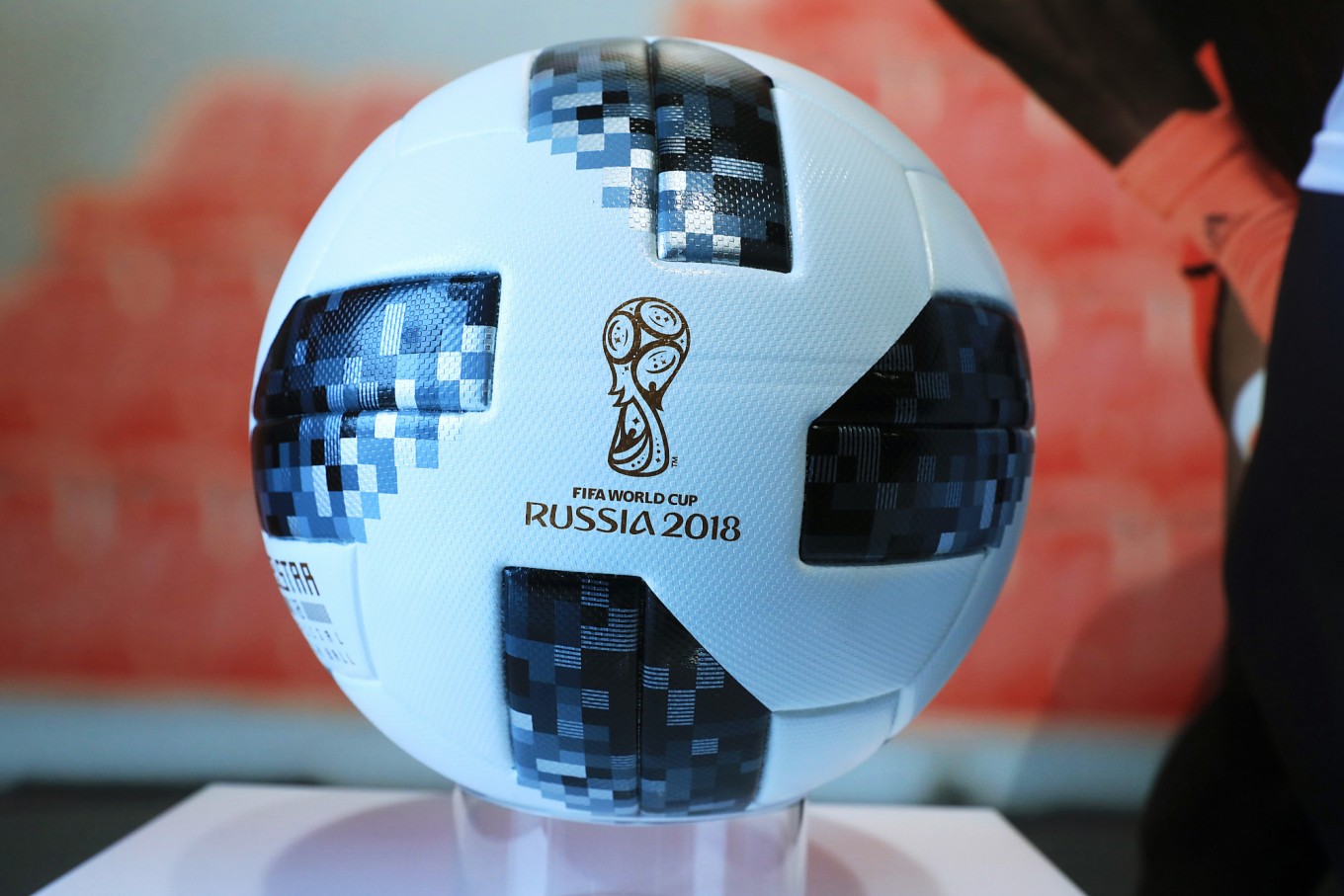Popular Reads
Top Results
Can't find what you're looking for?
View all search resultsPopular Reads
Top Results
Can't find what you're looking for?
View all search resultsAdidas’s high hopes for Russia’s World Cup thwarted by sanctions
Adidas is confining itself to temporary FIFA-run kiosks selling merchandise for fans at stadiums and public viewing festivals in the 11 cities hosting games.
Change text size
Gift Premium Articles
to Anyone
I
n 1980, the Soviet invasion of Afghanistan led dozens of countries to boycott the Summer Olympics in Moscow. An undaunted Adidas AG still sponsored the USSR’s Olympic team, becoming one of the first global brands well-known behind the Iron Curtain.
This summer’s soccer World Cup should have had the German company cashing in big on its ensuing decades of expansion in host nation Russia. But another Russian military adventure — this time in Ukraine — damps much of that opportunity.
Vladimir Putin annexed the Crimean Peninsula and invaded other parts of Ukraine’s east in 2014, leading to sanctions that have weakened the ruble and battered Russian consumers and companies. The drop in oil prices from above US$100 a barrel has hurt, too. Add it up and the World Cup may end up providing just a small boost for Adidas in the country.
“Russia didn’t develop to the extent people had hoped, due to sanctions and the oil price, two elements far beyond our reach,” Chief Executive Officer Kasper Rorsted said in an interview. “You have to have the patience for the long term, but urgency to deal with problems that arise. We don’t wait for miracles.”
The German company with its three-stripe trademark started outfitting various Soviet national teams in the 1960s. After the 1980 Olympics, Adidas spent two decades rising to the No. 1 and No. 2 positions among sporting-goods makers in the country with its Adidas and Reebok brands even as US rival Nike Inc. led globally.
The foray paid off. Sales in Russia grew 50 percent in the first quarter of 2008, when Adidas signed the country’s soccer union to a 10-year sponsorship deal. Sales in Russia more than tripled in eight years to peak at €1.1 billion ($1.3 billion) in the Sochi Winter Olympics year of 2014, about three times what Nike was then selling in the country.
It planned to have 1,200 stores in Russia and neighboring countries, plastering shops over 159 cities across the region, and ran most distribution itself in a country lacking large multibrand chains like Foot Locker Inc. The country became Adidas’s most profitable after China, with operating margins topping 30 percent.
The tide started to turn in 2013, when Adidas suffered problems transitioning to a new distribution facility and the ruble began to weaken. The Ukraine battles flared the next year.
Adidas responded by closing 500 stores in the region and redirecting marketing spending elsewhere.
Now Adidas in Russia is just a little more than half the size it was in the 2014 heyday, but generates more income from every pair of sneakers sold there than three years ago, when it first started to break out performance in the country.
Strict cost discipline and higher prices should boost Adidas’s Russia margin to 24 percent this year, said Macquarie analyst Andreas Inderst, “a good achievement given the very difficult macroeconomic backdrop.”
That recovery contrasts with other companies’ woes. German food wholesaler Metro AG in April had to slash its profit forecast following a worse-than-feared performance in Russia. Danish brewer Carlsberg A/S cited a 5 percent decline in its key Russian market in reporting first-quarter revenue that missed estimates.
Rival Nike has a pure wholesale business in Russia, with 44 Nike stores run by partners, distribution facilities and just a few hundred employees, compared with more than 6,000 at Adidas.
That has been “the more sensible way to go,” said Hubertus Hoyt, Nike’s general manager for Europe, adding that the company is “cautiously optimistic” about business in Russia.
For the World Cup, Adidas vowed to not repeat its Russian boom-then-bust mistake. To avoid running empty stores once the soccer-mad supporters return home, Adidas is confining itself to temporary FIFA-run kiosks selling merchandise for fans at stadiums and public viewing festivals in the 11 cities hosting games, Rorsted said.
Also, the event should help generate brand heat. Adidas is sponsoring 12 of the 32 participating teams — more than anyone else — including Argentina, Spain, Germany and Russia. Nike is sponsoring 10 teams, among them Brazil, Portugal and France.
The economic opportunity goes beyond shirts and cleats. Nike’s Hoyt said the World Cup is an “ignition point” in the season, prompting consumers to buy the training gear they see on Cristiano Ronaldo or Neymar Jr., and also helps sales of other sports gear and products.
To reap its benefits, Nike will open a facility for soccer and other sports for Moscow’s youth in the city’s Gorki Park when the tournament begins, similar to a soccer training center near Johannesburg it had built for the 2010 World Cup in South Africa. That ground is still in operation, and the Moscow facility will also be permanent and corresponds to a “sizable investment,” Hoyt said, without giving details.
Adidas sold 14 million official “Brazuca” match balls around Brazil’s 2014 World Cup and 8 million jerseys, a number it seeks to beat this year. Although the tournament and the 2016 Olympics didn’t boost Brazil as much as it had hoped, Adidas will keep investing in such countries, Rorsted said.
“Brazil will get its act together, and if you disengage with Russia, it is extremely difficult to get back in,” the executive said. “This business is about managing risks. Not all investments will pay off, but if you don’t make them, they’ll never pay off. Most of your big bets have to.”










